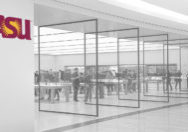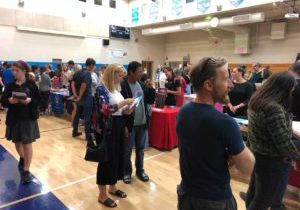With a couple of high school students in my house there's a fair amount of college shopping going on. We've attended quite a few college fairs lately, and I've come away with an increased appreciation for the role played by admission counselors at these events.
But I've also seen how an uneven playing field can dramatically shift a teenager's perception about a school. Many of these counselors are well meaning, and many are actually alums of the schools they represent – always a big advantage. But it's apparent that more care could be taken in how these representatives are prepared, and how much effort is put into their presentation.
Since I drove my kids and some of their friends to a recent fair I had a chance to ask them about some things I saw and what they thought. Here are some observations:
Don't break eye contact with a teenager when they're asking you a question., and when you are answering. Admittedly this very difficult as there are many students and parents trying to get your attention during this moment. Recognize that many of them are still new to this, and this may be only time they interact with a real person from your school before applying. It's still somewhat intimidating to many and your respect for their attention will be remembered.
Don't forget to follow up. First, listen to their question, then after your answer have a relevant question for them, directly related to their question. They expect an answer, but want a conversation. Everyone in my group made a connection between the length of the conversation and the positive perception they had.
Don't dress down – and certainly dress better than the teenagers you're meeting. This isn't the time to be "real" and on their level in the way you present yourself. They know how much this costs, and know that this is business. They expect a professional appearance.
Get contact information, but ask for more. If you think this student is a good fit for you school, ask them if they have resumés or transcript copies to leave with you. They'll remember you showed interest and signaled that your school sees them as a good fit (my group did). And hand them a card. Speaking of cards...
Never run out of cards. Or other handouts. Be prepared. Most of the tables we saw had a range of materials displayed, and many ran out, or displayed a few different pieces that appeared to be unrelated. And most students can't know which pieces to pick up. So make it easy – have a piece just for fairs, something better than a flyer, but less than a viewbook. If the card fits in the piece in a unique (memorable) way, even better. Speaking of cards...
Come to play. The schools that have well-defined brands, with articulated messaging, delivered across all media, are winning this 60 minute game. Students are shopping school brands like anything else, and the opportunity to directly compare one school's brand against the one across the aisle is profound. Many schools are not up to the challenge – displaying 4-5 pieces of collateral from 4-5 different campaigns, an inferior/old banner, or the absence of a specific, highly polished takeaway piece just for events like this – are indicators of a school that's not trying hard enough.
Know what students care about. Not just what they ask about, but understand some of the subtler facts they don't know to ask about. Some things that impressed me: highlighting how many students from their high school are enrolled there right now; air travel time from school to home; how many other schools within a few miles of your school.
One more thing: there are now a few consultants that specialize in training your student campus tour guides (I wish I'd though of this!). I wonder if they've considered expanding their service to your counselors?
More thinking










